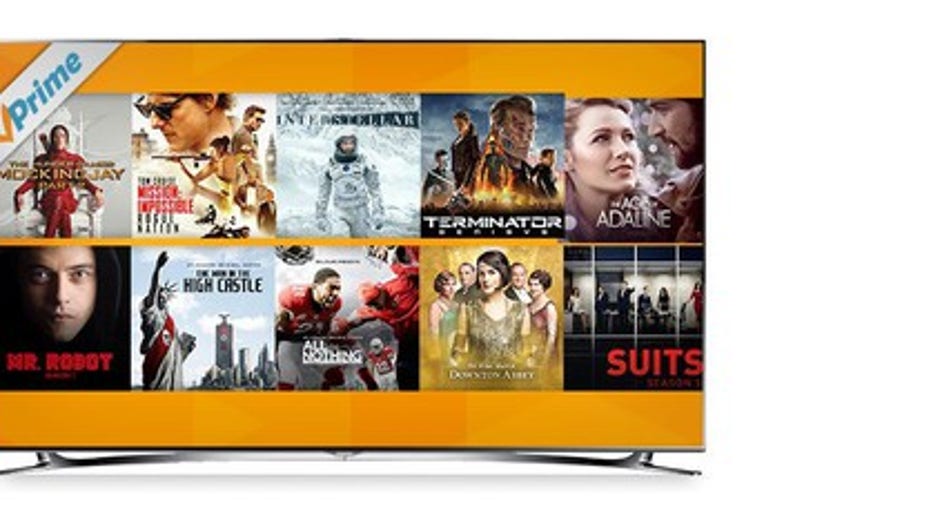Amazon's Content Budget Is Catching Up With Netflix's (If It Hasn't Already)

Amazon's (NASDAQ: AMZN) Prime Instant Video service is often seen as a secondary benefit of its Prime membership program. Just 44% of Prime subscribers use the feature, according to a survey from Raymond James. That compares to 88% who use Prime for two-day shipping on orders from Amazon.com.
But Amazon is investing heavily in Prime Video. It expanded globally at the end of last year, and management noted it doubled content spending in the second half of 2016. For 2017, analysts expect Amazon's content budget to keep growing. Analysts at JPMorgan estimate Amazon will spend $4.5 billion this year. That would put it relatively close to Netflix's (NASDAQ: NFLX) budget of $6 billion for the year. At least one analyst thinks Amazon may spend even more than Netflix on content to fuel its global expansion. As Amazon grows its content spending, it becomes a significant threat to Netflix, particularly abroad.
Image source: Amazon.
What management says about content spending
Amazon Prime Video expanded from just four countries in the first half of 2016 to over 200 by the end of the year. Part of the impetus for the expansion is Amazon's growing catalog of original content, for which it holds the global rights. "The cost of that then gets amortized to the country and becomes part of the international segment results," said Amazon CFO Brian Olsavsky on the company's third-quarter earnings call. "We consider that to be very valuable as opposed to versus licensing many times, by country, the third-party rights to content that we don't create ourselves."
Indeed, Amazon tripled the number of original titles in its Prime Instant Video catalog in the second half of last year. That contributed significantly to doubling Amazon's content budget for the second half of the year. "It's our ability to scale that and to amortize it [original content] over a much larger customer base, which will help us in the future," Olsavsky said on the fourth-quarter earnings call.
Netflix, for its part, takes a similar approach with both original and licensed content. More and more often, Netflix licenses the exclusive global rights to content it doesn't produce itself. Most recently it licensed 21st Century Fox'sThe People vs. O.J. Simpson: American Crime Story and Queen of the South.
Those rights don't come cheaply, of course. "Typically our bids are for exclusive access to the SVOD rights, and we are up against various cable and broadcast networks, as well as online video competitors," management writes in Netflix's long-term view. "As a rule, content owners always want another bidder, and never want one bidder to become too strong," it adds. That is to say, Netflix expects its costs for licensing content to keep rising.
Fighting for international markets
The biggest opportunities for both Netflix and Amazon lie outside of the United States. That's where competition may be fiercest, too. Not only are the two competing against each other, but they have to deal with local competitors as well.
Netflix's subscriber growth in the U.S. is starting to slow as it nears 50 million. The streaming service has by far the greatest reach of all the various streaming services in the U.S. Amazon, by comparison, only reaches about half the households of Netflix.
Internationally, Netflix has tremendous amounts of potential growth left. Its international subscriber count still trails domestic subscribers. Netflix only just expanded to 130 new countries at the start of 2016, and the new markets have helped accelerate Netflix's international growth.
Likewise, there's a huge opportunity for Amazon internationally. With Amazon's global expansion of Prime Video in December, it's introducing its brand to several new markets. Most of Amazon's retail revenue comes from North America. The opportunity for Amazon is to enter several international markets to establish its brand at a relatively low cost. Then it can come in and compete with online retail.
Most telling of that strategy is Amazon's decision to price its video service well below Netflix's in most markets. Even though Amazon is spending nearly as much as Netflix, and with a content budget that's growing even faster, it's able to undercut Netflix's pricing thanks to its retail business. That's a major threat to Netflix, which is reliant on international growth. If Amazon's content spending brings its video catalog up to par with Netflix's, many consumers may opt for the lower-priced service that includes additional benefits beyond video streaming.
10 stocks we like better than AmazonWhen investing geniuses David and Tom Gardner have a stock tip, it can pay to listen. After all, the newsletter they have run for over a decade, Motley Fool Stock Advisor, has tripled the market.*
David and Tom just revealed what they believe are the 10 best stocks for investors to buy right now...and Amazon wasn't one of them! That's right -- they think these 10 stocks are even better buys.
Click here to learn about these picks!
*Stock Advisor returns as of April 3, 2017.
Adam Levy owns shares of Amazon. The Motley Fool owns shares of and recommends Amazon and Netflix. The Motley Fool has a disclosure policy.